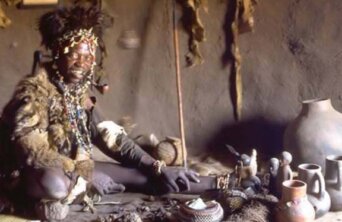- About
- Topics
- Story
- Magazine
- In-Depth
- Picks
- Opinion
- News
- Donate
- Signup for our newsletterOur Editors' Best PicksSend
Read, Debate: Engage.
| located: | Kenya, Central African Republic, Republic of the Congo, Cameroon |
|---|---|
| editor: | Bob Koigi |
In Kenya’s Western region deemed to be the country’s food basket, locals have over the years relied on subtle signs from the environment that would be missed by ordinary eyes, to interpret some of the most important phenomena to their daily lives.
The croaking of frogs, the way birds chirp, the flowering and shedding of leaves of select trees or the mating patterns of certain animals have been key pointers to important occasions like imminent rains or drought which help the community plan beforehand. These practices have been passed across generations.
In Central African Republic residents have embraced certain trees for their medicinal value and have been hailed over the years as crucial in averting major disease outbreaks.
These phenomena reverberates across the continent and have always proven potent in tackling some of Africa’s biting problems including diseases, poverty and drought. But even as globalization threaten to relegate them to the annals of history, science has indeed found value in majority of them, if the investments by major players are anything to go by.
Global drug manufacturing companies have sunk billions in botanical gardens and research in countries like the Democratic Republic of Congo and Cameroon as they seek to tap into the science behind these magic. The World Health Organization has given a clean bill of health to some of these indigenous plants, recognizing their immense contribution to global health. World Bank has on the other hand documented numerous cases of the role indigenous knowledge has played in development of mankind.
Even as westernization and modernity threatens to stymie the role of indigenous knowledge in today’s society, it is commendable to see researchers and scientists take time and invest resources in learning how traditional knowledge has furthered resilience and cushioned local populations from traditional and emerging threats.
Indeed civilization is as old as indigenous knowledge because it has borrowed heavily from some of these practices, key among them, the art of survival.
It is therefore imperative that as science advances, it is guided by the basics that define it, and indigenous knowledge has demonstrated over the years that it can handle even the pressing problems of the 21st century while furthering development. But even as science courts tradition it calls for protection of the rights of indigenous people over their traditional knowledge and giving them a place in modern scientific debate if we are to stay ahead of modern day threats.
Photo: UNESCO
